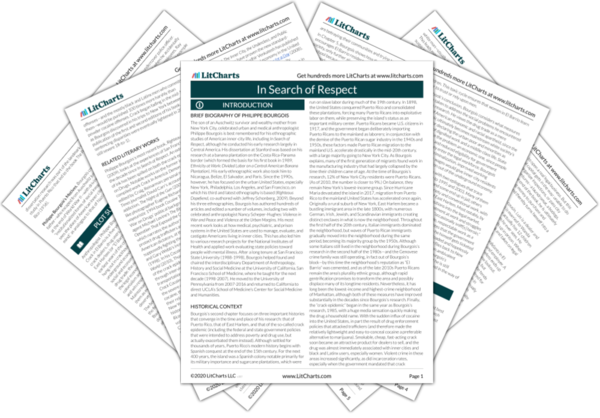Heroin Quotes in In Search of Respect
Cocaine and crack, in particular during the mid-1980s and through the early 1990s, followed by heroin in the mid-1990s, have been the fastest growing—if not the only—equal opportunity employers of men in Harlem. Retail drug sales easily outcompete other income-generating opportunities, whether legal or illegal.
The street in front of my tenement was not atypical, and within a two block radius I could—and still can, as of this final draft—obtain heroin, crack, powder cocaine, hypodermic needles, methadone, Valium, angel dust, marijuana, mescaline, bootleg alcohol, and tobacco. Within one hundred yards of my stoop there were three competing crackhouses selling vials at two, three, and five dollars.
Substance abuse is perhaps the dimension of inner-city poverty most susceptible to short-term policy intervention. In part, this is because drugs are not the root of the problems presented in these pages; they are the epiphenomenonal expression of deeper, structural dilemmas. Self-destructive addiction is merely the medium for desperate people to internalize their frustration, resistance, and powerlessness. In other words, we can safely ignore the drug hysterias that periodically sweep through the United States. Instead we should focus our ethical concerns and political energies on the contradictions posed by the persistence of inner-city poverty in the midst of extraordinary opulence. In the same vein, we need to recognize and dismantle the class- and ethnic-based apartheids that riddle the U.S. landscape.












